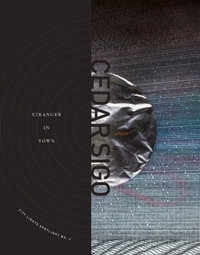Take a photo of a barcode or cover
It might seem the line “I write what is interesting for me to read” (in “Music for Torching”) may be interesting for us but trite to him. But the interestingness of a line can exceed that of its words: combined with context, there’s its visual appearance. In this case interest leaks upwards from the names tabbed right-of-centre and below: Anselm Hollo, Ed Dorn, both fixtures in Boulder when Sigo studied at “Buddhist-inspired” liberal arts school Naropa. Rather than overt spirituality, his inheritance is post-beat post-Black Mountain openness anchored in perception, and, more practically, attention to detail. Compare the journal version of “Showboat” to the book version (excerpted here). There are a couple of word edits, but the major changes are double-spacing and re-punctuation, with new enjambments allowing the poem to “stand a chance against the unfinished work in my desk drawer” (“The Sun”). The quote from the book version of “Showboat” has one error: the final call to “Let loose our new books and prints” has no period.
challenging
funny
mysterious
fast-paced
I do not know much about John Wieners, one of Cedar Sigo’s most significant sources of poetic inspiration, but I am intrigued now. What a tricky little book of poetry. You get lost. Lose track, lose the plot. Then a poem like “Sun” comes up, sort of explains it all to you, a real statement-piece, and you’re still lost. In a good way.

